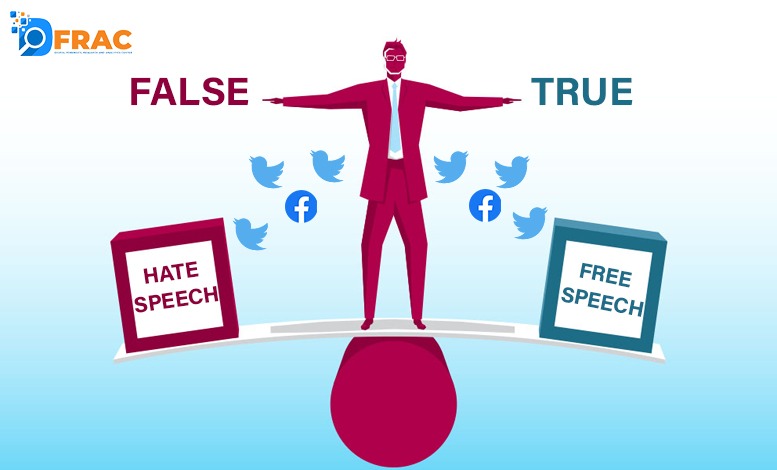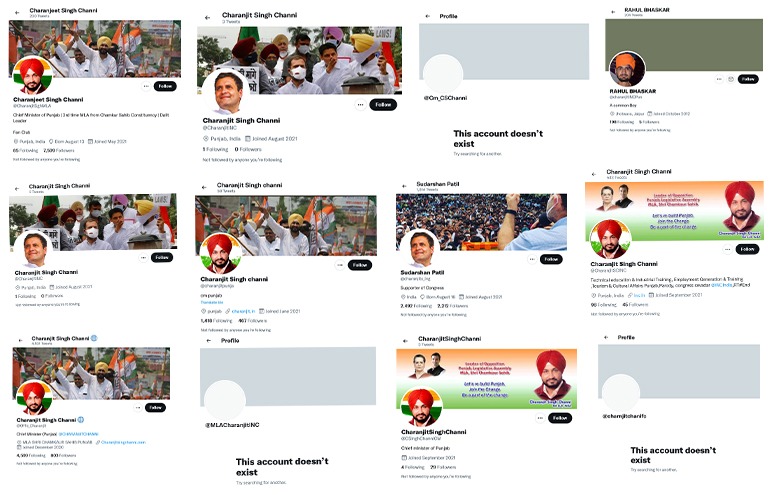In the post-truth era, the world of social media has made a huge impact on the thinking of the common man, and his interaction with each other. Even the mainstream media is affected by the lies, and artificial and misleading information running in this virtual world. And this situation has put journalists, academicians, and policymakers in deep concern. Social media is seen as a very effective means for us to use our fundamental rights openly where we all try our fundamental right to freedom of expression and here every one is vocal irrespective of caste, birth, and geographical location and expresses opinions. But under the guise of freedom of expression, issues spreading misinformation and hatred among the general public are also flourishing.
These platforms provide a clear and open platform for the increasing incidents of majoritarian violence in India as identity-based and popular politics dominate the landscape of the country.
Speeches spreading hatred and animosity under the guise of freedom of expression are affecting the Indian scenario and government agencies and individuals who are fighting terrorism and violent extremism in India are facing this situation.
Study of hate speech
The Observer Research Foundation released a study based on statistics of hate speech and retaliatory attacks on posts on social media activity in India. This is the first study of its kind to show that ‘religion-cultural’ practices involving not only religion but also clothing and food were the most obvious basis for the spread of hatred in Indian social media. It has grown at the rate of 19 to 30 percent in a year. The data for the study was gathered from public pages over two different month-long periods of events that occurred over a one-year time frame. Most of the comments incited physical harm or violence against people from India’s Muslim community, which contributes 180 million to the country’s 1.2 billion population.
Main themes of hate speeches
Inter-marriage between Hindus and Muslims, attacks on universal human rights and controversial issues such as cow protection and meat consumption were the main themes of these hate speeches. Various types of companies associated with social media have been constantly emphasizing that the role of social media should be in the form of positive interactions in society and the world. On the other hand, a study conducted by ORF shows that a growing segment of users consume the same social media in a systematic way to incite violence.
Political versus religious” landscape
In fact, in many parts of the world, democratic societies are becoming increasingly polarised in a “political versus religious” landscape that cuts across political and religious lines. Islamic fundamentalists in countries such as Pakistan, Indonesia and Maldives, Christian fundamentalism in the US and Western Europe, Buddhist fundamentalists in Myanmar and Hindu fundamentalists in India are playing with the “outrage of religious sentiments” of the common people and ensuring that religious and How faith and culture can be freely practiced by ethnic minorities. The ease of communication on social media can often exacerbate a sense of “outrage”.
Line between hate and free speech blurred
There has been a huge increase in the incidence of ethnic or religious heads rallying together on the basis of “identifying” as liberal democracies. According to them, political groups are selectively involved in creating a sense of both guilt and prejudice for real religious devotion. This “making up” of crime is fueling communal tensions and dividing an already polarised politics along religious lines. Hate speech serves its main purpose when the support base is widened, a divisive narrative is created, and people are mobilized around a political agenda. Meanwhile, the media gets caught up in their reporting of incidents when they are taking place or inadvertently become puppets in the hands of politicians who use hate speech as a tool for identity politics. In the process, the media often succumbs to hate spin and loses sight of the quality created, especially where the line between hate speech and free speech is blurred.
The 2014 election war between India’s two main national parties—the then Indian National Congress and the opposition Bharatiya Janata Party (BJP)—had distinct ideological extremes that resonated across social media platforms. While much of the rhetoric during the 2014 general elections focused on issues of corruption and development, the electoral battle gained momentum when the ‘moderate’ Congress was forced to vote through social and economic reservations to appease India’s religious minorities. and the ‘right-wing’ BJP claimed that such appeasement was due to the progress of India’s predominantly Hindu population. The election campaign speeches exposed the feeling of majoritarian oppression to unite Hindus politically—deepening ideological, religious and communal divisions. While the pattern kept repeating in every election since then, it also threw unprecedented challenges in the form of hate and misinformation.
Time to bell the cat!
Violence and terror cannot be fought at the cost of allowing one form of the other. Undoubtedly, fighting terrorism in all its forms is a national security priority for any government. The widely used definition of “terrorism” is “the unlawful use of violence and intimidation, especially against civilians, in the pursuit of political motives” which needs to be understood as the key to the larger agenda of combating extremism. Similarly, the law has to find new ways of dealing with hate and misinformation, which is also causing dangers for national security in terms of cyberwar. And it needs much better coordination between various security agencies. India must now bell the cat, and accept the potential dangers that are escalating, to preserve and protect the basic liberties of the country.





